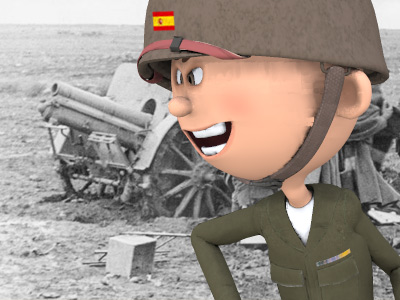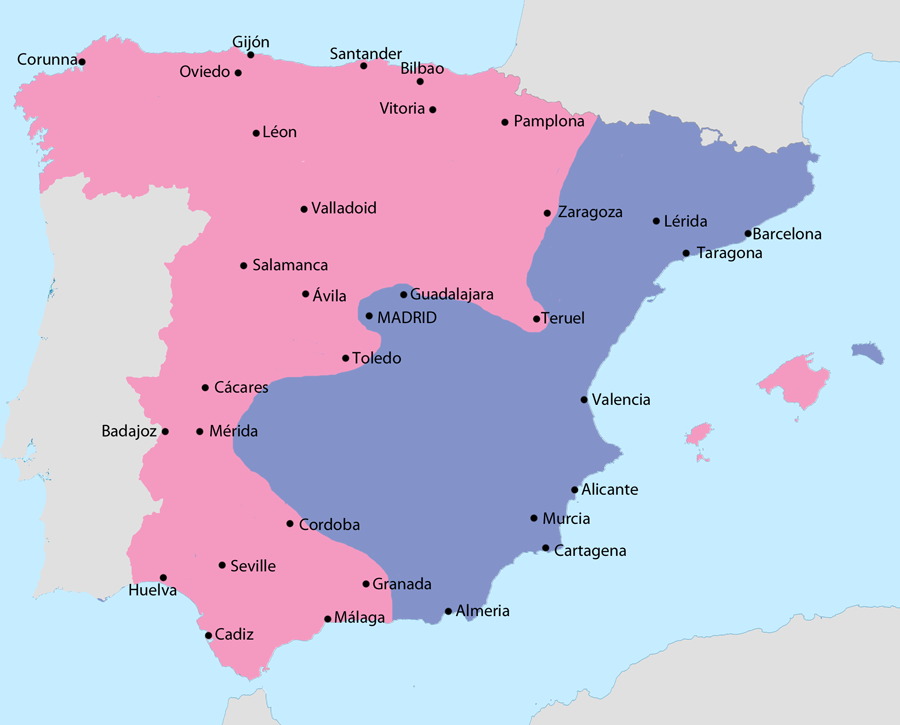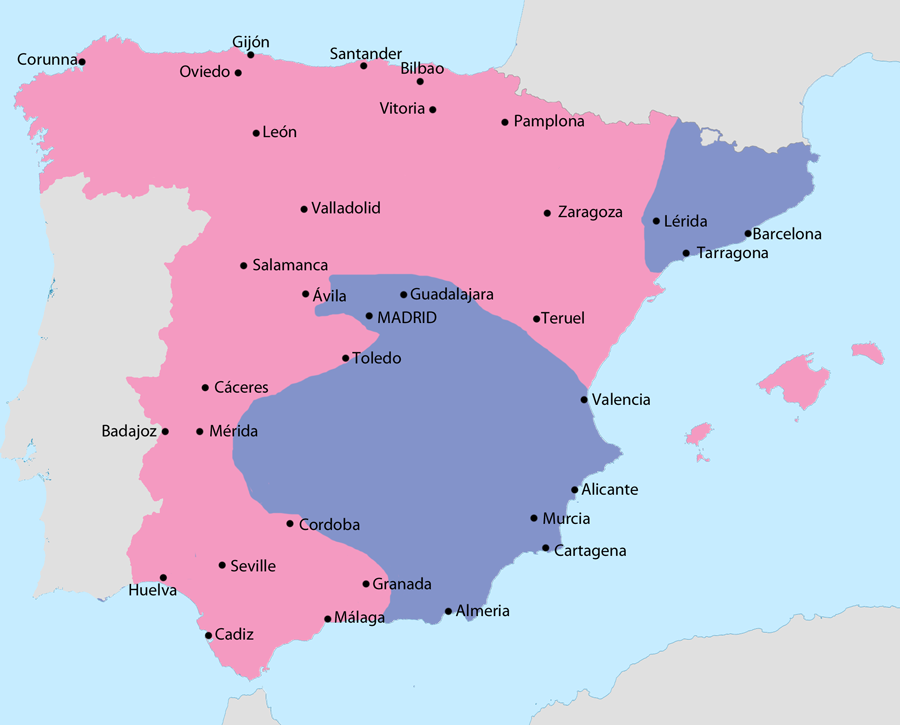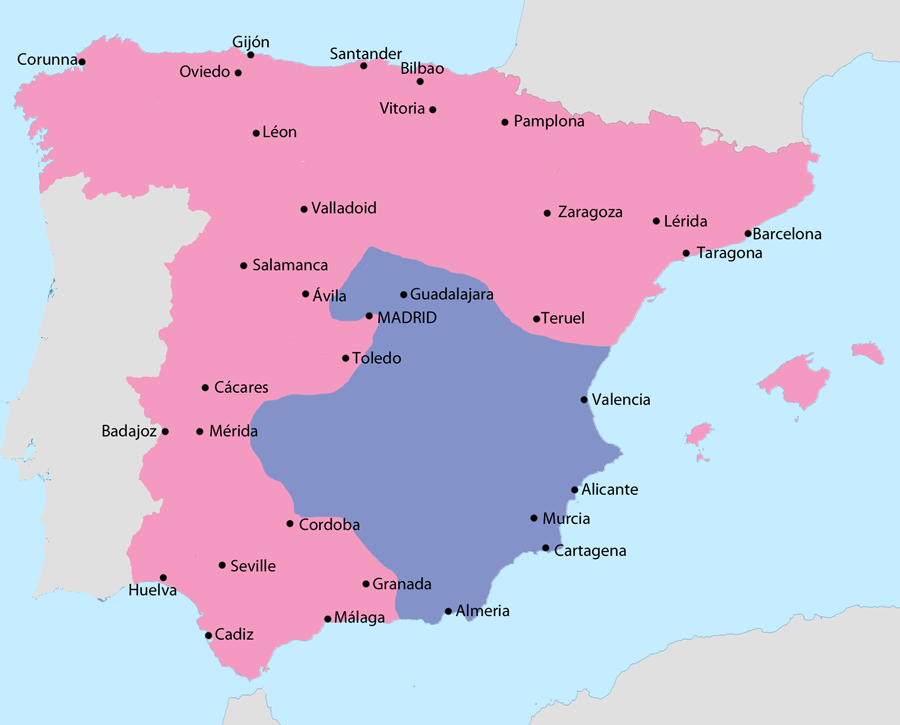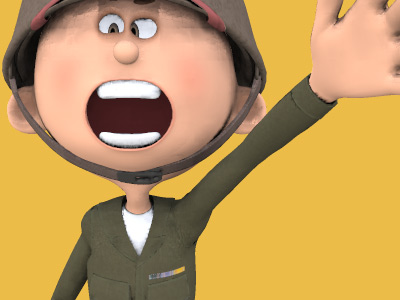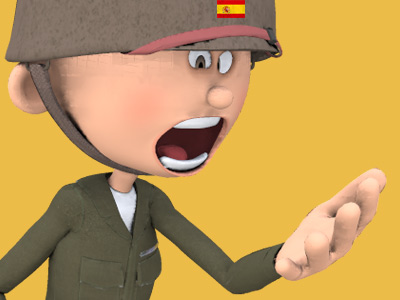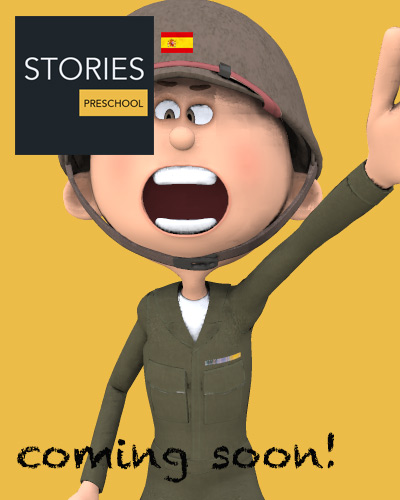Spanish Civil War (1936 to 1939)
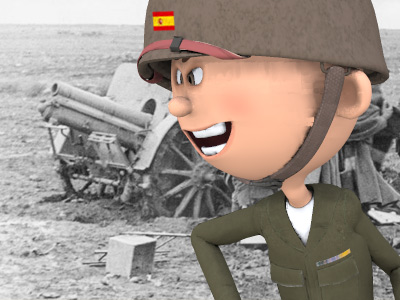
1936
A large air and sealift of Nationalist troops in Spanish Morocco was organized to the southwest of Spain. Coup leader Sanjurjo was killed in a plane crash on 20 July, leaving an effective command split between Mola in the North and Franco in the South. This period also saw the worst actions of the so-called "Red" and "White Terrors" in Spain. On 21 July, the fifth day of the rebellion, the Nationalists captured the central Spanish naval base, located in Ferrol, Galicia.
A rebel force under Colonel Alfonso Beorlegui Canet, sent by General Mola and Colonel Esteban García, undertook the Campaign of Gipuzkoa from July to September. The capture of Gipuzkoa isolated the Republican provinces in the north. On 5 September, the Nationalists closed the French border to the Republicans in the battle of Irún. On 15 September San Sebastián, home to a divided Republican force of anarchists and Basque nationalists, was taken by Nationalist soldiers. The Nationalists then advanced toward their capital, Bilbao, but were halted by Republican militias on the border of Biscay at the end of September.
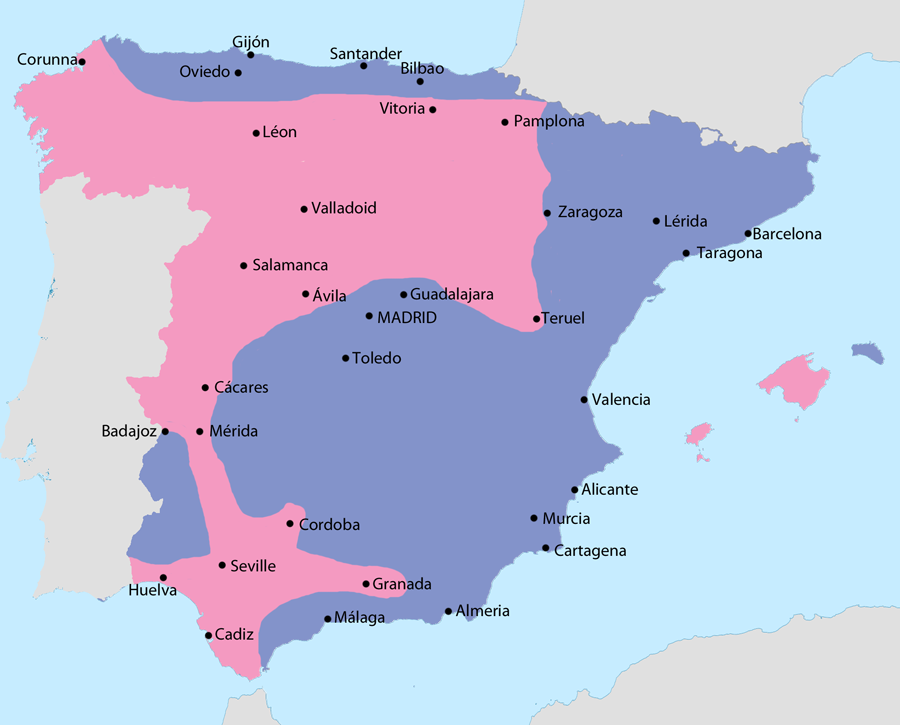
Map showing Spain in September 1936
(Pink) Area under Nationalist control
(Purple) Area under Republican control
The Republic proved ineffective militarily, relying on disorganized revolutionary militia. The Republican government under Giral resigned on 4 September, unable to cope with the situation, and was replaced by a mostly Socialist organization under Francisco Largo Caballero. The new leadership began to unify central command in the republican zone.
On the Nationalist side, Franco was chosen as chief military commander at a meeting of ranking generals at Salamanca on 21 September, now called by the title Generalísimo. Franco won another victory on 27 September when his troops relieved the siege of the Alcázar in Toledo, which had been held by a Nationalist garrison under Colonel José Moscardó Ituarte since the beginning of the rebellion, resisting thousands of Republican troops, who completely surrounded the isolated building. Moroccans and elements of the Spanish Legion came to the rescue. Two days after relieving the siege, Franco proclaimed himself Caudillo ("chieftain", the Spanish equivalent of the Italian Duce and the German Führer -meaning: 'director') while forcibly unifying the various and diverse falangist, Royalist and other elements within the Nationalist cause. The diversion to Toledo gave Madrid time to prepare a defense, but was hailed as a major propaganda victory and personal success for Franco. On October 1, 1936 General Franco was confirmed head of state and armies in Burgos. A similar dramatic success for the Nationalists occurred on 17 October, when troops coming from Galicia relieved the besieged town of Oviedo, in Northern Spain.
In October, the Francoist troops launched a major offensive toward Madrid, reaching it in early November and launching a major assault on the city on 8 November. The Republican government was forced to shift from Madrid to Valencia, outside the combat zone, on 6 November. However, the Nationalists' attack on the capital was repulsed in fierce fighting between 8 and 23 November. A contributory factor in the successful Republican defense was the effectiveness of the Fifth Regiment and later the arrival of the International Brigades, though only an approximate 3,000 foreign volunteers participated in the battle. Having failed to take the capital, Franco bombarded it from the air and, in the following two years, mounted several offensives to try to encircle Madrid, beginning the three-year Siege of Madrid. The Second Battle of the Corunna Road, a Nationalist offensive to the northwest, pushed Republican forces back, but failed to isolate Madrid. The battle lasted into January.
HISTORY
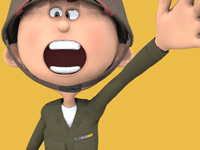
RESOURCES
This article uses material from the Wikipedia article "Spanish Civil War", which is released under the Creative Commons Attribution-Share-Alike License 3.0.
© Stories Preschool. All Rights Reserved.
